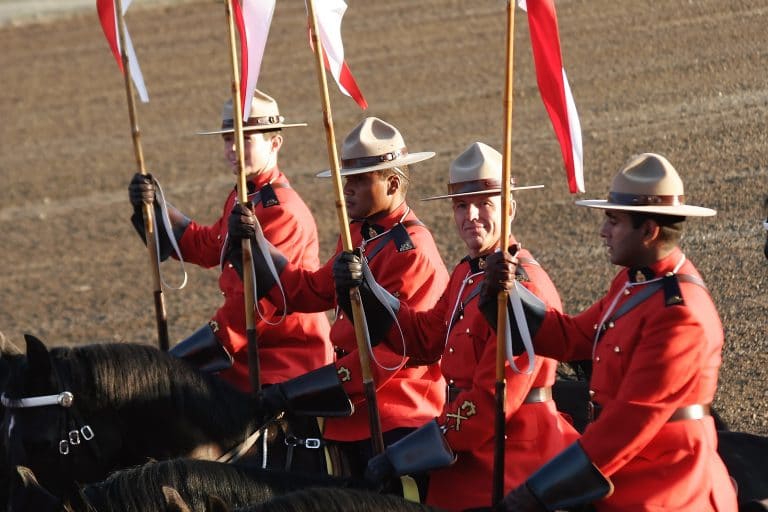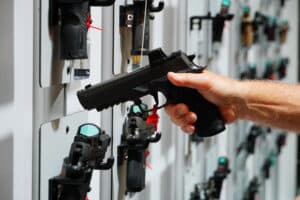Just four months remain before it becomes a crime to possess AR-15s and similar firearms in Canada. In the year and a half since the confiscation plan was announced only 160 guns of an estimated 100,000+ have been turned in.
So, how many will comply before the deadline arrives?
The answer is a bit less obvious than it appears at first glance. Yes, the compliance rate is extremely low right now and there is very little time before the deadline kicks in. However, the Canadian government has effectively incentivized people not to turn in their guns up to this point through basic incompetence.
The “buyback” part of the mandatory buyback has yet to come online. The details of it haven’t even been released. On top of that, the government has told gun owners if they choose to turn in their guns now they won’t be compensated whenever a buyback does appear.
It’s not clear at this point whether the lack of compliance is a sign most Canadians who own the affected guns will never turn them in or they’re just waiting for the compensation plan to kick in.
Many American gun owners may assume the majority of Canadian gun owners who haven’t turned in their guns will never do so. However, it remains to be seen if their neighbors to the north have the same inclination to resist gun seizures.
Efforts to confiscate guns, magazines, and accessories in America have consistently fallen flat.
The bumpstock ban enacted unilaterally under the Trump Administration collected very few of the devices despite former President Donald Trump (R.) being popular with many gun owners. Shortly after the ban, which made it a felony to possess the devices, went into effect in March 2019 the ATF reported Americans turned in just 582 of an estimated 500,000 bumpstocks.
Additionally, when New York expanded their definition of “assault weapons” in 2013 to include upwards of a million guns, only about 44,000 or four percent were actually registered by the deadline.
New Jersey saw even less compliance with its ammunition magazine confiscation. When the state lowered its magazine capacity restriction from 15 to 10 rounds in 2019 it made millions of magazines illegal to possess. State police reported that not a single one had been turned in nine months later.
None of these schemes involved strict enforcement, of course. There was no door-to-door effort to take any of these arms. In most cases, these laws are not enforced at all or only as arbitrary tack-ons to more serious violent crimes. But, having a potential felony hanging over their heads, despite how life-disrupting the consequences could be, has not been enough of a threat for most to comply.
Some factors that led to minuscule compliance in the United States may well apply in Canada. After all, they appear to be taking the same enforcement approach. The law seems to be written in the same confusing manner as many of the ones above and it appears to be garnering very little attention in the media as the deadline approaches.
Given the often broad and vague nature of the bans and lackluster attempts to inform those affected, many gun owners likely don’t even realize they’re supposed to turn in their guns, magazines, or accessories. The Canadian ban uses measures such as rifles capable of handling ammunition that produces “10,000 joules” of energy or bore diameter that will likely be unfamiliar to most gun owners.
There are about 100,000 registered guns the Canadian government estimates are affected by the new ban. The government can likely reach those owners who will then have to make a more pressing decision about whether to comply. However, the government admits there are many more affected by the law which are not registered and will be much harder to get the word out about.
Plus, ownership of the guns in question is far less common in Canada. While ARs are immensely popular in the United States with industry estimates putting the number owned by civilians at nearly 20 million, they are obviously not as popular across the border. So, those who have gone out of their way to pick them up may be committed to the idea of keeping them.
And, of course, many may be bothered by the implication they can no longer be trusted with their own firearms because they may turn into a mass murderer. Some may feel the guns are uniquely dangerous, as many gun-control advocates do, and turn them in anyway. Though, it is not common for people to buy guns they themselves agree are too dangerous for civilians to own. And gun owners often find the distinctions between guns that are banned and those allowed to be arbitrary or unimportant.
Still, cultural factors may have an opposing impact.
Canada does not have the same tradition of arms as the United States. Nobody does, really. Resistance to gun confiscation is quite literally built right into our founding mythos. The Red Coats that Paul Revere warned were coming, were going to Concord to seize a cache of powder and arms.
The shot heard round the world was fired during a standoff over a gun confiscation effort.
That tradition has carried up through to the modern era. The National Rifle Association, the largest gun group in America, has long declared “from my cold, dead hands” as their motto. Many American gun owners remain deeply committed to resisting any form of confiscation.
Our neighbors to the north achieved independence without an armed revolution. They have more in common with Australia or New Zealand in that regard. All three countries have now passed mass confiscation laws with little initial political pushback.
New Zealand’s 2019 mandatory buyback collected more than 56,000 guns. Australia managed to collect over 700,000 guns between its buybacks in 2001 and 2003.
Perhaps Canadians will be as inclined to turn them in as their former commonwealth cousins instead of following the more rebellious tendencies of their southern neighbors. Perhaps the government will extend the April deadline and announce the buyback details to make that easier. Time will tell.
Of course, even in those best-case scenarios, the numbers aren’t as impressive as they might seem. Some estimates put New Zealand’s compliance rate at less than 30 percent and gun-control advocates are already calling for stricter measures in the wake of rising gun crime. Estimates for Australia’s compliance rate go as low as 20 percent and Australians have already replaced all of the guns taken out of circulation by the mass confiscation.
Then, even if Canadians do comply in large numbers, the question of whether any of this is actually effective will likely remain hotly debated. A Rand research review of Australia’s 25-year-old program published this year found little evidence it actually produced noticeable effects on even just firearm murder and suicide in the country. And the reduction in violent crime Australia experience after their gun ban was comparable to the one experienced in the United States during the same time period even as the U.S. saw tens-of-millions of new guns sold.
It will be interesting to see what the Canadian government does by April 2022, how Canadian gun owners react, and what impact it all has.





